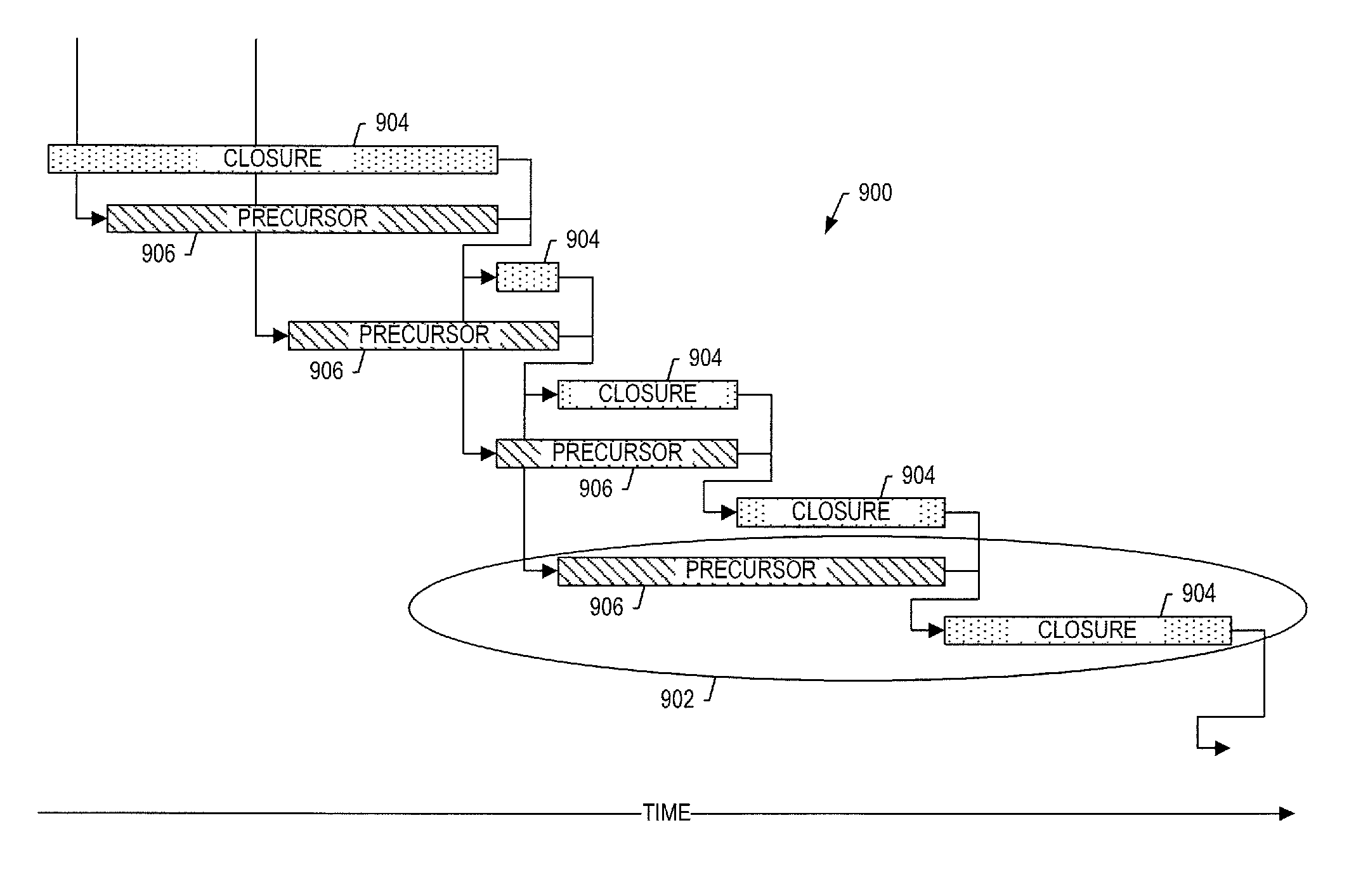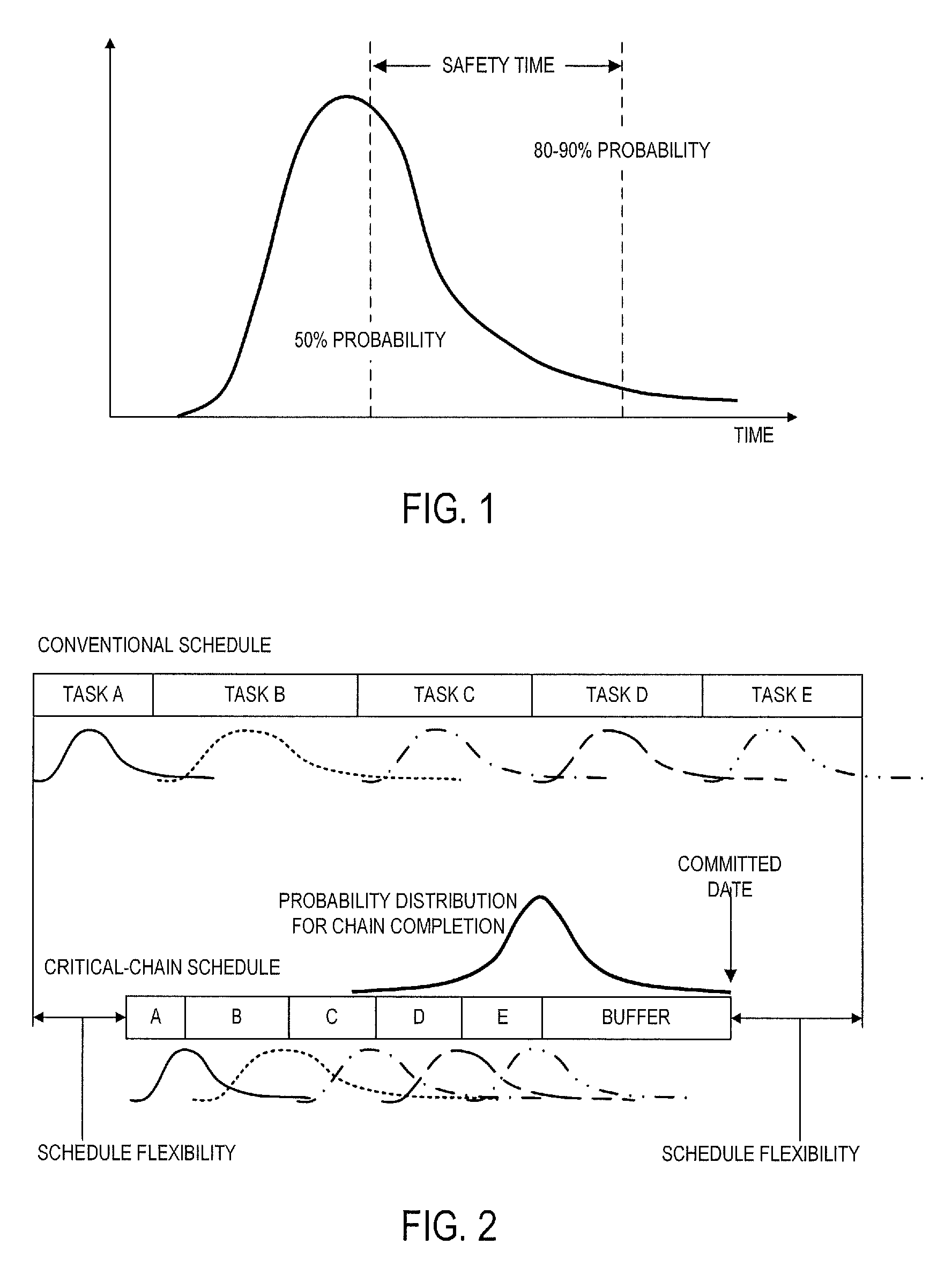Alpha-chain constraints for process planning
a technology of process planning and constraints, applied in the field of process planning, can solve the problems of affecting the cost of the project, unable to accurately represent a selected process, and risk of failure to deliver the required content, so as to facilitate resource management scenario planning, facilitate planning, and resolve the conflict over the level of detail
- Summary
- Abstract
- Description
- Claims
- Application Information
AI Technical Summary
Benefits of technology
Problems solved by technology
Method used
Image
Examples
example implementations
[0049 will be primarily described in conjunction with scalable, hierarchical feed-forward processes, but it should be understood that example implementations may be equally applicable to any of a number of other types of processes. Also, example implementations will be primarily described in conjunction with aircraft production. But again, it should be understood that example implementations may be utilized in conjunction with a variety of other applications, both in the aircraft industry and outside of the aircraft industry.
[0050]Referring now to FIG. 3, a process-planning system 300 is illustrated according to example implementations of the present disclosure. The system may include any of a number of different subsystems (each an individual system) for performing one or more functions or operations. As shown, for example, the system may include a process-construction system 302, total-ordering system 304, schedule modeler 306 and / or plan modeler 308. The process-construction syst...
PUM
 Login to View More
Login to View More Abstract
Description
Claims
Application Information
 Login to View More
Login to View More - R&D
- Intellectual Property
- Life Sciences
- Materials
- Tech Scout
- Unparalleled Data Quality
- Higher Quality Content
- 60% Fewer Hallucinations
Browse by: Latest US Patents, China's latest patents, Technical Efficacy Thesaurus, Application Domain, Technology Topic, Popular Technical Reports.
© 2025 PatSnap. All rights reserved.Legal|Privacy policy|Modern Slavery Act Transparency Statement|Sitemap|About US| Contact US: help@patsnap.com



